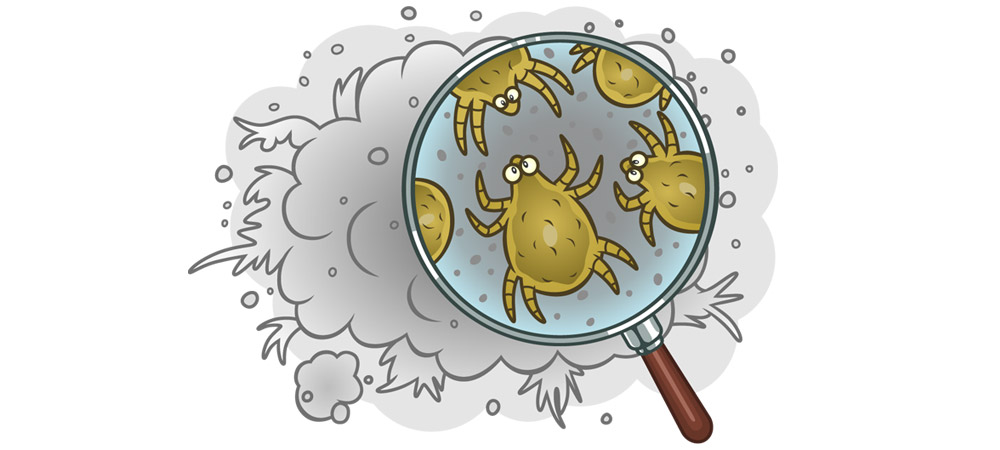Dust: The Forgotten Fall Allergy

When the seasons change from summer to fall, those with allergies are on alert for ragweed — it can wreak havoc on those who are allergic. But, rarely are people allergic to just one thing, so many times there are other allergens at play when you have a reaction. In the fall, that other allergen is often dust mites. Some may call it the forgotten fall allergy.
So, what is an allergy to dust mite, why is it bothersome in the fall, and how does it impact your total allergen load?
Dust Mite Allergy
Dust mites are tiny, microscopic, creatures that look like eight-legged spiders when viewed extremely close up. They thrive in humid areas of the home (that’s why they love mattresses) and can live all year-round.
People are allergic to their droppings and their disintegrated bodies that are prevalent once their life cycle is up. When breathed in, some bodies interpret them as harmful and respond with an allergic reaction.
Prevalence in the Fall
Though dust mites don’t have a “season” like ragweed, they seem to cause more trouble in the fall and winter, when people are spending more time indoors. After a summer outdoors, spending more time inside can “re-expose” you to dust mites.
This is a common example: Just like for those who are allergic to cats, the longer they are around cats, the more severe their symptoms will be. The same goes for dust mites.
Additionally, when you turn on your heater for the first time in the fall, it can kick out dust mites that have made their home in your filter all summer.
Total Allergen Load
This addition of allergy exposure from inside your home can be a painful combination for those who are already experiencing ragweed allergy symptoms when they head outdoors. We explain this through a concept called the Total Allergen Load.
Like a bucket that’s filling with water, too many health factors or allergens at once can spill over and cause an allergic reaction. If you normally don’t react to dust mites, but have a strong reaction to ragweed, this might be why every fall you are itchy and sneezy even when indoors. Too many stressors and allergens at once increases your Total Allergen Load and can lead to you being sicker than expected.
Dust Mite Control
Here are a few tips to help control dust mites, and your symptoms, this fall:
- Before turning on your heater, replace the filter with a new HEPA filter.
- Wash your bedding in hot water to kill off any dust mites that have found their way into them.
- Add a mattress cover to your bed to help prevent any more dust mites making it a home.
- Vacuum with a HEPA filter a few times a week.
- Take your allergy medication daily, and if possible, a few weeks leading into fall to help prepare your body for exposure.
Ready to take the leap and start treating the cause and changing the disease?
If you’re looking for a more permanent solution to your allergies, consider a personalized, disease-modifying treatment like allergy drops through Allergychoices. Start by finding a provider near you that is trained in using allergy drop treatment — personalized just for you — following the La Crosse Method Protocol.




